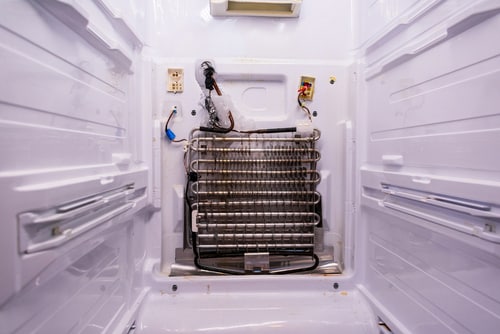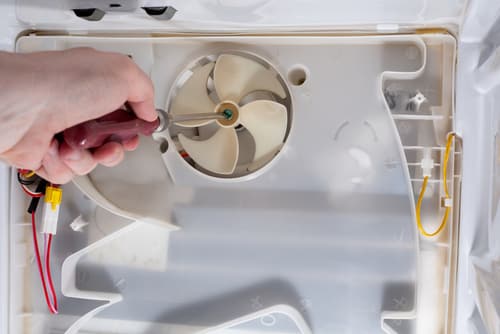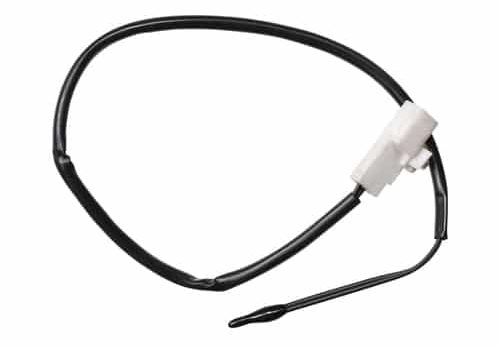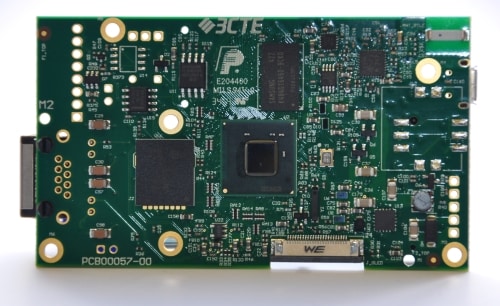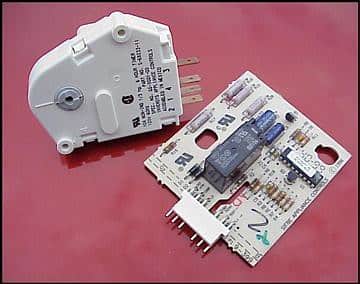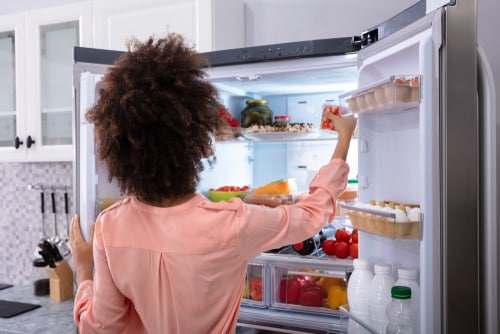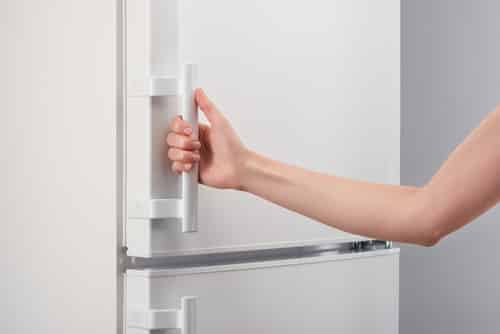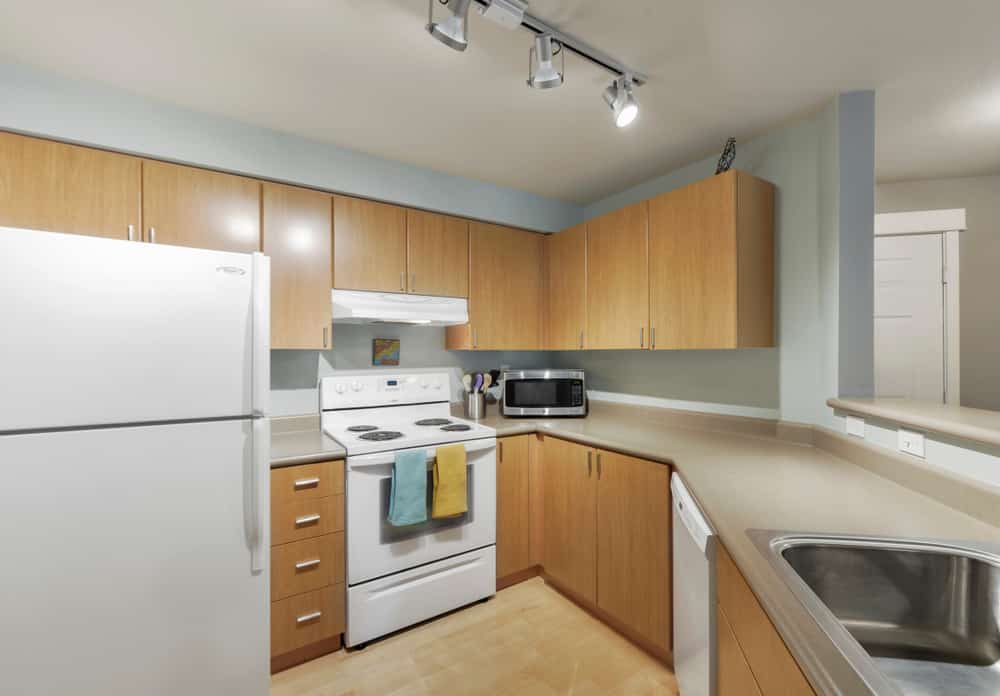
A refrigerator is a vital household appliance because it is the only way to preserve our leftover food or store something that should be stored at cool temperatures.
For this reason, people try their best to buy the most trusted brand, but even those high-end refrigerators can cause issues or break down from time to time.
Kenmore is a popular refrigerator brand that’s known for its reliability. However, even Kenmore fridges are susceptible to breakage and issues over time, and it might be a wise idea for you to look at the fixes below before you decide to replace them.
How to Fix Kenmore Fridge Not Cooling But Freezer Working?
1. Inspect The Evaporator Coils
The Kenmore fridge is integrated with the defrost heater just like other fridges to melt away the frost accumulated or developed all over the coils.
On the other hand, when the defrost heater isn’t working properly, it won’t switch on, and the frost will just keep building upon the coils.
When the coils are clogged with frost, the airflow into the fridge will be restructured, and the refrigerator won’t work or develop cold air.
Since these coils are located in the lower area, the freezer will keep working, but the refrigerator compartment will be adversely affected.
So, you must inspect the coils and see frost buildup. If you find frost, the defrost heater has to be replaced by a technician.
If you want a quick fix, use the hairdryer in a warm setting to melt away the frost on coils, but make sure you keep your safe distance. All in all, when the frost melts away, the airflow will be optimized, and the fridge will start cooling.
2. The Fan Motor
If there was no frost on the coils, the next step is to check the fan motor. This component is responsible for drawing cold air all over the coils and circulating it into the fridge.
On the contrary, when the fan doesn’t work, there won’t be sufficient cooling in the fridge. The simple solution is to move these fan blades by hand. If they aren’t turning easily and freely, the motor should be replaced.
The second symptom that your fan motor is defective is the extra noise. This is because noise is created when blades are working too hard to move. So, if you hear a loud noise, it’s another indication that a fan motor replacement is needed.
Lastly, if you have a multimeter available, you can check the continuity of the motor on your own to be sure before calling a technician!
3. Damper Control
For people who don’t know, the damper control in the Kenmore fridge is a complete assembly, and it is responsible for opening and closing the cold air supply into the fridge.
When this damper control component stops working normally, it won’t open on time, and the cooling will be affected because cold air won’t be pushed into the fridge.
Initially, you should check if the assembly is stuck. If it’s stuck, you can just tweak it around, and it will work fine. However, if it’s not stuck, the assembly is broken, and you must get it replaced to restore cooling in the fridge.
4. Note The Thermistor
Even if you’ve little information about the electrical appliances, you would be aware that the thermostat will monitor the Kenmore fridge’s temperature and send the readings to the mainboard, which is a control board.
As a result, the board will regulate the power supply to fans and compressors according to the temperature readings.
On the contrary, when the thermistor doesn’t work properly, the fans and compressor won’t run according to the specified intervals, or they might even run unnecessarily.
So, just check the continuity of this component with your multimeter and replace it in case of zero continuity. Once the thermistor is optimized, the cold airflow will be restored.
5. Main Control Board
The main control board is responsible for providing the voltage readings to the fan motor as well as the compressor. If this board malfunctions, it will stop sending out the voltages to the motor and compressor, and they won’t initiate cooling.
Truth be told, these temperature control boards are highly likely to be misdiagnosed, so you should test them with a multimeter and take accurate readings.
6. Check The Defrost Thermostat
This thermostat is slightly different from the one we talked about before because it specifically monitors the evaporator coil’s temperature.
If these coils get lower temperatures than expected, the contacts of the thermostat will close to ensure sufficient defrosting flow during the cycle.
The defrosting heaters are added to melt away the frost on the coils. However, when this defrost thermostat is not working, the contacts won’t close, and the heater won’t get the power.
As a result, the coils will be frosted, restricting the airflow. The refrigerator compartment won’t work properly but repairing it will resolve the problem.
7. Defrost Timer
As the name suggests, this part of the Kenmore fridge is responsible for switching on the defrost heater to ensure timely defrosting of accumulated frost. When the timer stops working, it won’t give a start-up signal to the defrost heater, hence the frosting.
In addition, the defrost heater won’t get power unless the timer sends it off. That being said, you should get the defrost timer checked and repaired. Once it’s fixed, the coils will pass the cold air inside, and the cooling will start.
8. Air Damper
The air damper is located between the freezer and fresh food compartment. When the air damper gets stuck, it will hinder the circulation and release of cold air into the fridge. So, the ideal fix is to replace the air damper to ensure the seamless release of cold air.
9. Overstuffing
There are chances that the fridge might not be cooling because you’ve put in too much stuff in the fridge. So, open the Kenmore fridge door and clear up some space.
As a result, the air vents will be free to release cool air, promising better cooling inside.
10. Defrost System
The Kenmore fridge is highly likely to have a defrost thermostat system, depending on the model, and it’s the same component as a defrost timer.
The defrost system is responsible for signaling the fridge’s system to run the defroster to ensure the frost doesn’t build up. So, you need to inspect the fridge to see if there is some frost buildup, and if there is, there is an issue with the defrost system.
11. Temperature Control Board
A temperature control board is another essential component to check when the Kenmore fridge is not cooling up the refrigerating area.
When the temperature control board stops working, the fan motor and compressor will stop getting voltages, hence the cooling issue. A technician will determine the scale of the issue with the temperature control board and replace it accordingly.
12. Door
The problem is as minor as an improperly closed door in various cases. This is why you should check the fridge’s door and make sure it’s properly closed.
In addition, you must check the gasket because that’s what keeps the door properly closed. If you aren’t aware, gaskets are the flexible elastic strips around the door’s edges and are responsible for sealing the door
13. Compressor Start Relay
A compressor is used to compress the refrigerant vapors and push them into the fridge’s coils. This pressure and pushing tend to create heat, resulting in the formation of hot gas, which is later cooled down and absorbs heat from the fridge.
So, if the freezer fan is working well, but the refrigerating compartment isn’t cold, the compressor start relay could be damaged. All in all, replacing the compressor start relay is pretty convenient compared to replacing the entire compressor.
